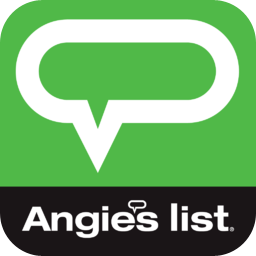Lead is a metal that’s used in a variety of materials in homes and businesses—including water supply pipes and plumbing fixtures. While lead pipes were banned in 1986 and manufacturers are moving towards lead-free alternatives to prevent lead contamination, many homes today still have lead pipes as well as plumbing fixtures or soldering that contain lead.
Overexposure of lead in water can cause lead poisoning, which can cause serious health problems in both children and adults.
Signs of lead poisoning include:
- Learning, growth and behavioral problems, lower IQ and hyperactivity, and hearing problems in children
- High blood pressure, heart and kidney disease, and pregnancy and fertility problems in adults
Our professionals at Alpha Environmental have the experience and equipment to update your outdated lead water supply pipes to help reduce the amount of lead in your water. View our lead testing services or contact us today to schedule a free estimate from one of the most reliable lead removal companies in Portland.
How Lead Enters the Water Supply
Lead can enter a water supply when parts of the plumbing system that contain lead start corroding.
Lead-contaminated water can come from:
- Lead pipes. Lead pipes were a popular choice for water supply lines before being banned in 1986.
- Brass or chrome-plated brass fixtures. Lead is added to brass to make it softer and easier to make into valve seats, threads, and other plumbing materials.
- Copper pipes soldered with lead. Soldering is the process of joining 2 pieces of metal together by melting solder, which is an alloy that consists primarily of tin and lead. Lead-free solders have become more popular, but lead-based solders are still frequently found in plumbing systems.
The amount of lead that enters the water supply increases with the:
- Acidity of the water. Water that’s more acidic makes pipes more vulnerable to corrosion, increasing the chances of lead contamination.
- Softness of the water. Hard water has calcium and magnesium salts that coat the inside of the pipes and help prevent corrosion.
- Amount of lead in your plumbing system. Your water will have less lead if you only have brass plumbing fixtures than it would if you also had lead supply pipes and/or pipes soldered with lead.
- Temperature of the water. Hot water typically contains higher levels of lead than cold water.
- Age and condition of the pipe. The older the pipes are and the worse condition they’re in, the more they’re likely to corrode and put lead in your water supply.
- Amount of time the water sits in pipes. The longer the water sits in your pipes (i.e., the less you run the water), the more time the lead has to enter the water supply.
Getting the Lead Out of Your Water
To remove lead from your water supply, you have 3 options:
- Have your plumbing system replaced completely (repiped).
- Have the lead pipes lined.
- Install a point-of-use filtration system.
Lead Pipe Replacement
Also called repiping, lead pipe replacement treats lead in water by removing your existing plumbing system and completely replacing it with lead-free pipes and fittings.
The lead repiping process is:
- Time intensive. Repiping can take anywhere from a few days to over a week.
- Invasive. To repipe your system, a professional will likely need to dig up your yard and cut into walls and flooring to remove the old pipes and install the new ones. This also means limited access to water during the repiping.
- Expensive. Because the repiping process is so time and labor intensive, professionals need to charge more for the service.
Pipe Lining
Pipe lining is a trenchless sewer repair method that involves feeding a liner into the existing plumbing. This new liner essentially creates a new pipe inside the existing one.
One popular pipe lining process for treating lead contamination in Portland is Cured-in-Place-Pipe lining (CIPP) because it works for long stretches of pipe. CIPP involves:
- Inserting a flexible liner inside the existing pipe.
- Inflating the liner so it expands to the size of the pipe.
- Heating the liner or applying ultraviolet light to harden the liner so it’s smooth.
Filtration System
A more cost-effective option for treating lead-contaminated water is to install a point-of-use water filtration system. This system attaches to the supply line near the fixture that needs treatment (under the sink, on the shower head, etc.).
The National Sanitation Foundation (NSF) and the American National Standards Institute (ANSI) together established standards for the effectiveness of products that treat lead contamination. To effectively reduce or eliminate lead from water, you’ll want a system that meets either:
- NSF/ANSI standard 42, which removes particles and improves the taste and odor of the water.
- NSF/ANSI standard 53, which reduces contaminants that can cause health problems (including lead).
Removing Lead from Water in Portland, OR
At Alpha Environmental, we take lead contamination seriously. Our professionals will help you choose the right method to ensure you no longer have lead-contaminated water.
Call us at (503) 292-5346 or contact us online to schedule a free estimate.


